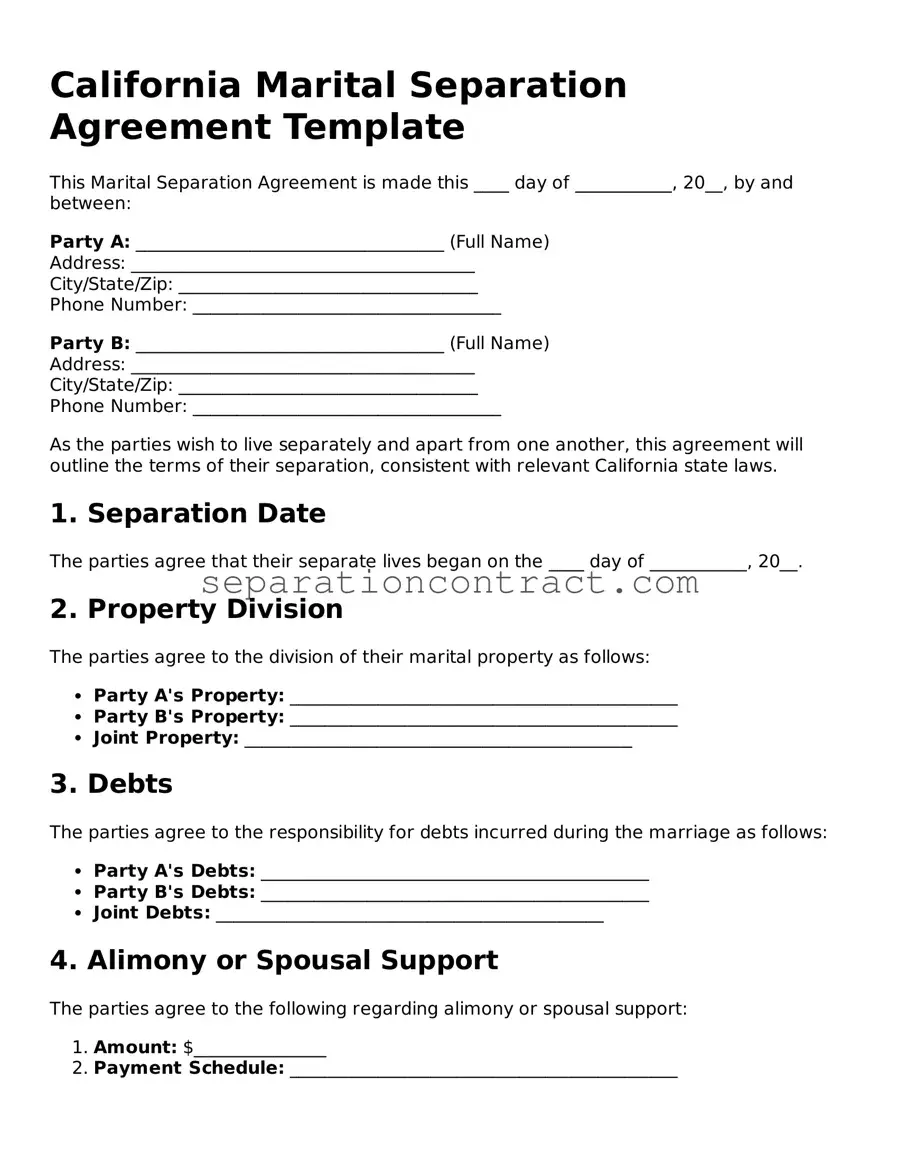Completing the California Marital Separation Agreement form requires careful attention to detail. One common mistake is failing to provide complete personal information. This includes full names, addresses, and contact information for both parties. Inaccurate or missing details can lead to delays in processing the agreement.
Another frequent error involves not clearly defining the terms of separation. Parties may overlook important aspects such as property division, spousal support, or child custody arrangements. Ambiguities in these sections can result in misunderstandings and disputes later on.
Some individuals neglect to include all assets and debts in the agreement. It is essential to list both parties' property and financial obligations accurately. Omitting items can lead to complications and potential legal issues in the future.
People also often fail to sign the document properly. Both parties must sign the agreement, and it may require notarization depending on the situation. Missing signatures or improper notarization can render the agreement unenforceable.
Another mistake is not considering tax implications. Parties may overlook how the separation will affect their taxes, especially regarding spousal support and property division. Consulting with a tax professional can help avoid unexpected financial consequences.
Some individuals may rush through the process without fully understanding the implications of the agreement. Taking the time to review each section carefully is crucial. Seeking legal advice can provide clarity and ensure that all rights and obligations are understood.
Lastly, failing to keep copies of the signed agreement is a common oversight. Both parties should retain a copy for their records. This can be important for future reference and in case any disputes arise regarding the terms of the separation.
